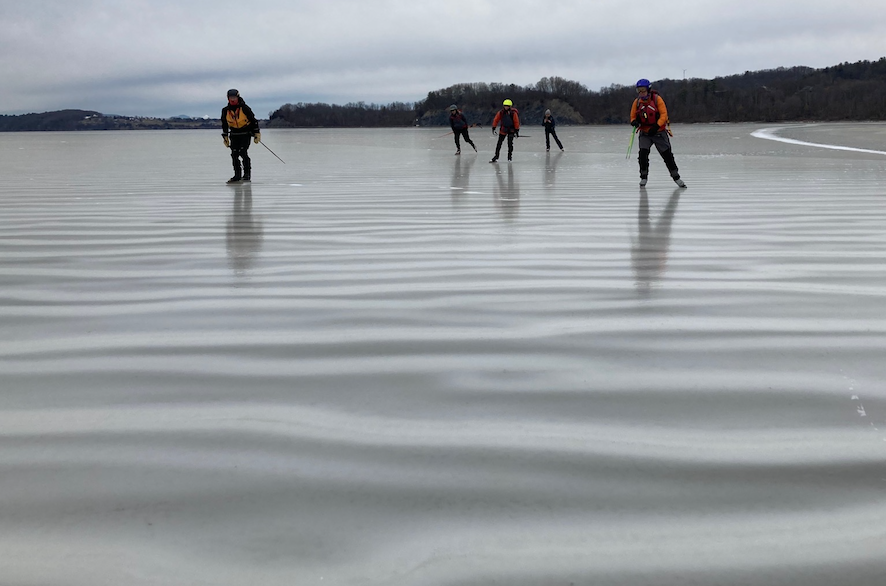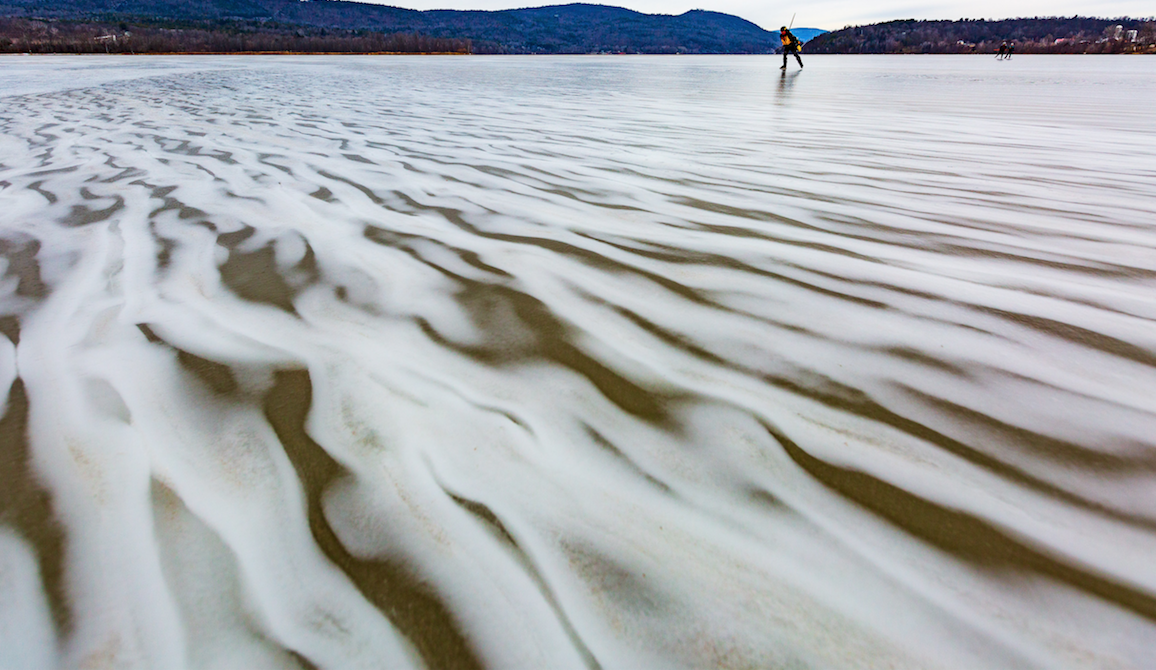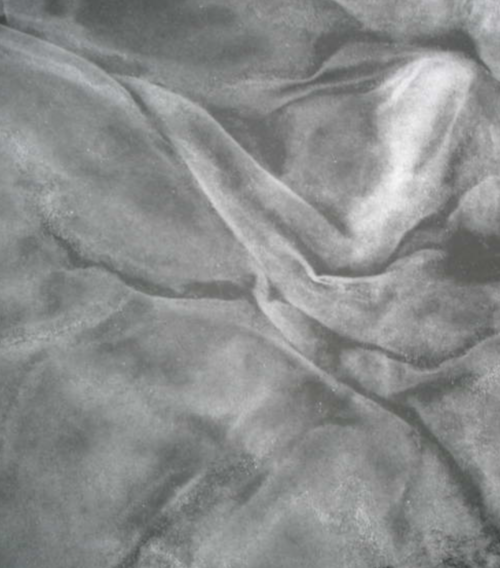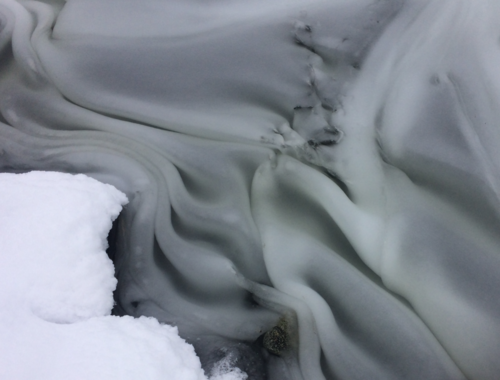Ring page 6 published March 2021.
In late December 2020 there was a ring event. This page will look at what can be learned from the pictures and other evidence.
Where: Mirror Lake in NH had extensive ring families as did Lake Fairlee in Vermont
Photographer Karl Ramsdel got many spectacular drone pictures and videos. Some of them can be seen on his Instagram site. Several other people got on the ice pictures that gives clues on how the rings form.
One insight is the role of two types of slush formation that was more obvious than previous ring events. White ice has long been called 'snow ice'. It usually forms by snow falling of an ice sheet and getting partially thawed or rained on. The other type occurs when the snow falls on open water. when it is cold enough and the snow is falling fast enough that it forms slush or even dry snow. On this web site it is called 'Snow-fall ice'. It is uncommon. I spend a lot of time wandering arouind the ice and only see it every few years. When conditions are right, the tiny interstitial bubbles in the slush get stired making a wide range of patterns.

Picture from Eric Teed on southern Lake Champlain. Also a linear pattern, with less mixing. Late December 2020. 
The above image is from Dan Spada, Southern Lake Champlain in early January 2021
You can see how the opacity of the light grey and dark grey play against each other. Dark is ice and water which are dark, because it does not reflect much light and. White was the snow-fall slush when it was modestly slurred before the surface froze and thickened.
Another characteristic of of snow-fall ice events is that they show the appearance much more vertical roughness than the skaters I talked to found on the ice was smooth skating (8 or so on the skater roughness scale). This is is especially true on some of the Drone Videos taken by Karl Ramsdell on Mirror Lake
Link to a video byl Karl Ramsdell
Link 2 a second video by Karl Ramsdell

There were a few versions of snow-fall ice. The next one is a dark grey with a uniform color surface.
The picture came from Dr Jo at Lake Fairlee in late December.
The following picture shows another of the many pattern types seen in snow fall ice. The image is about 4 feet across. It is probably a thin, folded layer of slush after it froze.

Below is snow-fall ice that formed next to shore with dry snow. The pictures are from Tom Duka. They shows another of many slush related types of patterns.

Slush is quite thixatropic which causes it to behave like a solid at low stresses and like a solid at somewhat higher stresses.
A crude flexural strength test suggested that the unfrozen, saturated slush is about 3 % of the tensile strength of fully frozen ice.
You can see that many snow-fall that we see is usually frozen with a layer of clear water on top. Often they look rough and too bumpy to skate but they are actually are quite smooth. In many pictures there is an optical illusion that looks like the dark ring feature has several inches of height above the top of the ice sheet.
The following are some clues about some clues and about how ice rings and other features might form.
It starts with snow falling on an established ice sheet or falling onto water forming slush. There is some evidence that rings form from only from snow-fall slush. Either way lake stars are very common on snow ice and snow-fall ice is uncommon.

